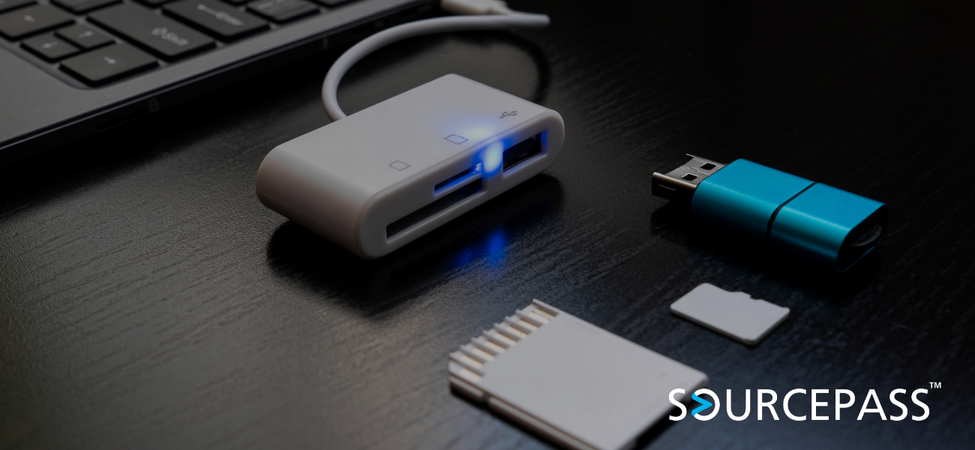What’s the Importance of a Removable Media Policy?
Jan 31, 2025 Alex Davis 4 min read



Removable media such as USB drives, external hard drives, and memory cards are commonly used for transferring and storing data.
While convenient, these devices also present significant security risks, particularly when it comes to protecting sensitive information. If not properly managed, removable media can become a gateway for data breaches, unauthorized access, and malware infections.
In this blog post, we will explore why having a documented removable media policy is crucial and outline the key components that should be included in the policy.
Why Does Your Businesses Need a Removable Media Policy?
Businesses should establish and enforce a Removable Media Policy to mitigate security risks. This policy defines the guidelines for the use of removable media within the business, ensuring that sensitive data is protected and that employees are aware of the potential risks involved.
A Removable Media Policy is important for several reasons, all of which contribute to securing sensitive data and maintaining business continuity:
1. Protects Sensitive Information
Removable media devices often contain sensitive data that could be at risk of being exposed, stolen, or misused. Without strict control over their use, employees could inadvertently or maliciously transfer confidential information to unauthorized parties. A Removable MediaPolicy helps to safeguard proprietary data, customer information, and intellectual property from unauthorized access or accidental leaks.
2. Minimizes the Risk of Malware and Viruses
Malware can easily spread through removable media devices, which could compromise your entire network. Malware can spread from one infected device to another, causing widespread damage, data loss, or downtime. A proper removable media policy limits access to only authorized devices and ensures that all media is scanned for malware before it is connected to business systems.
3. Prevents Data Loss
Losing a USB drive or an external hard drive can lead to the loss of critical business data, which can have financial and operational consequences. The risk of data theft or accidental loss can be minimized with clear guidelines about how removable media should be used, stored, and disposed of.
4. Enhances Compliance with Data Protection Regulations
Compliance with data protection regulations such as GDPR, HIPAA, or PCI-DSS requires businesses to take appropriate measures to protect sensitive data. By establishing and enforcing a removable media policy, businesses can ensure that they are meeting legal and regulatory requirements concerning data storage, transfer, and access. A lack of a policy could result in non-compliance, penalties, or reputational damage.
5. Promotes Accountability and Transparency
A formal removable media policy creates a transparent framework for employees to follow, reducing the likelihood of mistakes and misunderstandings. When all employees understand the rules regarding the use of removable media, it helps foster a culture of accountability and responsible data handling.
Key Components of a Removable Media Policy
A Removable Media Policy should clearly define the rules and procedures regarding the use, storage, and management of removable media devices. Below are the essential components that should be included in the policy:
1. Purpose and Scope
The policy should begin with a clear statement of purpose, explaining why the business is implementing the policy and the risks it aims to address.
It should also define the scope, specifying which types of removable media are covered by the policy (e.g., USB drives, external hard drives, CD/DVDs, SD cards, etc.).
2. Authorized Use of Removable Media
The policy should outline who is authorized to use removable media devices and for what purposes. It may include the following guidelines:
- Access Control: Define which employees or departments are permitted to use removable media and under what conditions.
- Approved Devices: Specify the types of removable media that are approved for use in the business (e.g., business-issued USB drives).
- Personal Devices: Clarify whether personal removable media devices are allowed on business systems and under what circumstances.
3. Data Encryption Requirements
To protect sensitive information, the policy should mandate that all data transferred or stored on removable media be encrypted. Encryption ensures that even if the device is lost or stolen, the data remains unreadable without the appropriate decryption key.
- Encryption Standards: Define the encryption protocols to be used (e.g., AES-256 encryption).
- Encryption Tools: Specify approved encryption software or solutions to be used for securing data on removable media.
4. Malware Scanning
The policy should require that all removable media devices be scanned for malware before they are connected to business systems. This helps prevent the introduction of malicious software that could compromise the security of the entire network.
- Automated Scanning: Ensure that devices are automatically scanned for malware when connected to the network.
- Manual Scanning: If automated scanning is not available, establish procedures for manually scanning removable media devices before use.
5. Storage and Handling Guidelines
The policy should define how removable media should be stored and handled to minimize the risk of data loss or theft. This includes:
- Physical Security: Specify where removable media devices should be stored (e.g., in locked drawers or cabinets when not in use).
- Loss Prevention: Require that employees report lost or stolen devices immediately to minimize the impact of data loss.
- Device Tagging: In some cases, it may be beneficial to tag removable media devices with unique identifiers to track them more easily.
6. Data Transfer and Disposal Procedures
The policy should also provide guidelines for the secure transfer and disposal of data on removable media. This includes:
- Data Transfer: Establish procedures for securely transferring data from removable media to business systems, ensuring that unauthorized parties do not have access.
- Data Destruction: Specify how data should be securely erased from devices that are no longer in use or are being disposed of. This may include physical destruction or the use of data-wiping software.
7. Compliance and Audit Requirements
The policy should include requirements for ensuring compliance with internal guidelines and external regulations. This includes:
- Audit Logs: Require that all use of removable media be logged, including the date, user, and purpose of use.
- Regular Audits: Conduct periodic audits to ensure that employees are adhering to the policy and that removable media devices are properly secured.
8. Consequences for Policy Violations
The policy should clearly state the consequences for violating the removable media guidelines, which may include disciplinary action or termination. This reinforces the importance of following the policy and helps to ensure accountability.
Contact Sourcepass for more information on creating a Removable Media Policy for your Business
If you want to safeguard sensitive information, maintain compliance with data protection regulations, and promote a culture of security and accountability, contact Sourcepass to speak with a Sourcepass Specialist to learn more!
Subscribe To
Sourcepass Insights
Sourcepass Insights
Stay in the loop and never miss out on the latest updates by subscribing to our newsletter today!
.png?width=500&height=100&name=White%20Logo%20-%20Transparent%20Tag%20(3).png)



